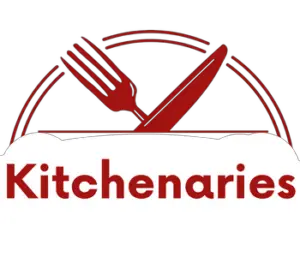This post contains affiliate links. When you buy through our links, we may earn a commission.
Nobody can claim to know everything. But every job has some major skills, which are necessary to be aware of for the person who wants to master those particular skill sets.
Cooking is a vast field and one needs multiple skills to be an expert of, to become an expert cook. Different types of vegetable cuts are one of these sub-skills, essential for an excellent cook to be aware of.
What is the importance of cutting styles? And what tools do they need to be incorporated? In the current article, we shall answer these and other likewise questions for your guidance and interest.
Here are 10 Different Types of Vegetable Cuts:
- Brunoise Dice
- Julienne
- Fine Julienne
- Baton
- Batonnet
- Small Dice
- Medium Dice
- Large Dice
- Chiffonade
- Paysanne
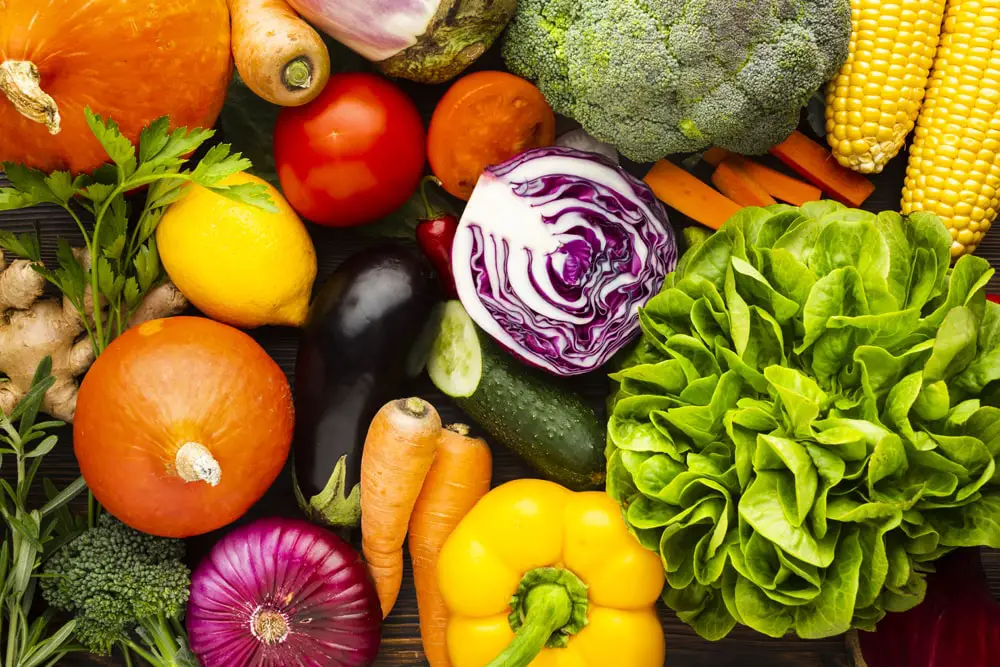
Numerous types of cutting vegetables are used for different recipes all around the world. A good cook, though, needs to be good at almost everything, but it’s a universal fact that no one can be good at everything. Knowing as much as you can is the standard.
Below we have discussed some ten of the most commonly used vegetable cutting styles for your interest and knowledge.
1. Brunoise Dice
Usage: Garnish
It is a culinary knife cut. Brunoise is a tricky cut. It needs some practice to master. Moreover, as the food is cut into smaller cubes, careful cutting is required for safety concerns.
In this cutting of vegetables, the food is first julienned and then diced. The obtained cubes are near to 3mm in each size. Leeks, carrots, turnips, and celery are some typical veggies for Brunoise.
2. Julienne
Usage: Cooking
This culinary knife cut is also known as a French cut or allumette. The food is cut into long thin strips in this cutting vegetables.
The finely French cut slices look like match sticks. Carrots, celery, and potatoes are the most common veggies to be julienned for carrot julienne, celeries remoulade, and julienne fries.
3. Fine Julienne
Usage: Garnish
Fine julienne is almost the same cutting style with a different size. It incorporates a cut smaller to half than julienne. The height is also as smaller as the julienne cut.
4. Baton
Usage: Dressing / Salad
The largest vegetable-cutting style is Baton. It can work with almost every veggie. It is precisely half the size of a macedoine dice. It is wider than the other commonly used cutting styles.
5. Batonnet
Usage: French Cuisine
It is the French word for Baton, the one we discussed above. Though the name is symbolically used for a comparatively smaller cutting of vegetables.
6. Small Dice
Usage: Multiple recipes
This basic knife cut is a larger shape than a Brunoise cut. Small dice-cut veggies can be used for different cooking applications. These cube-shaped cuts are obtained by transverse julienne cutting.
7. Medium Dice
Usage: Multiple recipes
Medium dice is a bigger version of the small dice discussed above. The size is almost double that of the small dice. Half by half inches is the standard size for a medium dice cutting.
8. Large Dice
Usage: Stews
Bigger than the small and medium dice is the large dice. Long dishes and stews normally involve the large dice type of vegetable cutting.
9. Chiffonade
Usage: Dressing / Salad
Spinach, swiss chard, sorrel, and other leafy greens are cut with the chiffonade technique. The food is sliced into long strips with this slicing technique. Stacking the leave and rolling them tight allows you to slice them perpendicular to roll.
10. Paysanne
Usage: French Cuisine
The cutting of vegetables is termed as Pays Anne in French. The veggies are cut very thin in this cutting style. This informal cutting is not specific to shape. You can cut the fruits and veggies in the form as you require. The shape of the food being cut lets you decide the way you slice it.
Essential Tools for Cuts
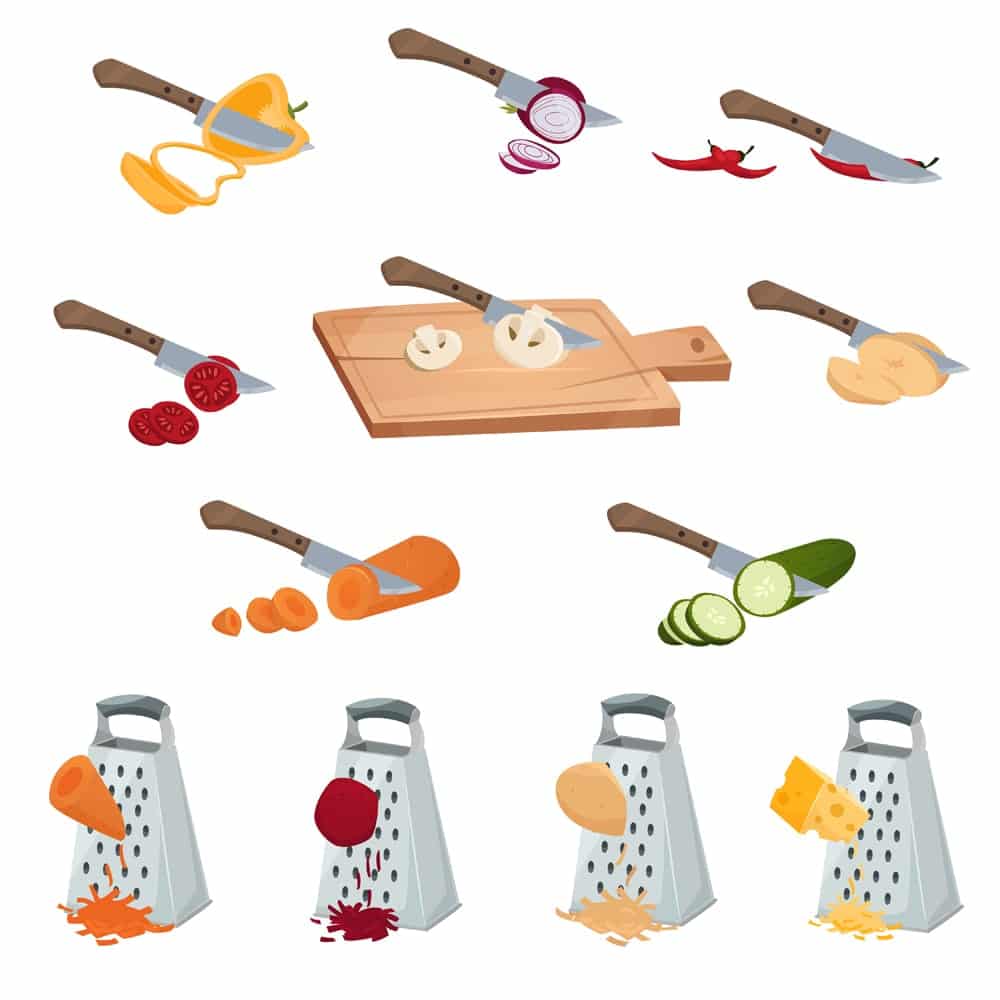
Cutting vegetables is not a simple job. It is nearly an art. Practice makes you perfect with this art. Mastering which expedites and simplifies your cooking job to a breeze.
The preparation phase is considered the most challenging part of the cooking process. Besides mastering the types of cutting vegetables, it also needs a particular tool kit designed to chop and cut jobs. Let’s have a look at the essential tools you may need in this course.
1. Cutting Board
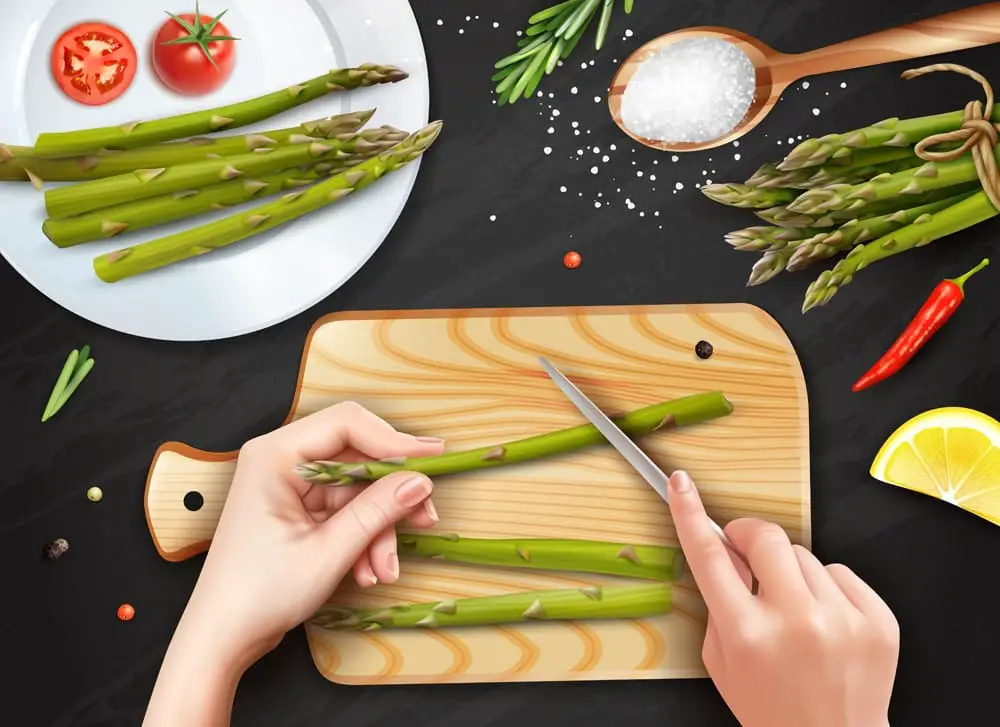
A rectangular or square board with different sizes available in the market is the most necessary thing you may need. The presence of a cutting board benefits you in multiple ways.
You can find cutting boards as small as 8×10 inches and as significant as 20×30 inches. The small, medium and large options are there to be your best pick. The most preferred materials for the cutting board may be wood, plastic, steel, or silicone. Different people like additional materials for cutting boards.
A cutting board provides you with an even firm base for cutting, which helps the smooth operation of the knife and secures your kitchen top to be scratched because of the knife hit.
It also increases your knives’ lives as do not hurt the knife’s sharp edge the way a kitchen top may do. The cleaning of your kitchen platform is also easier when most of the job is done on a cutting board.
An important thing to keep in mind is that while buying a plastic cutting board, make sure that it is made of BPA free material.
2. Chef Knife
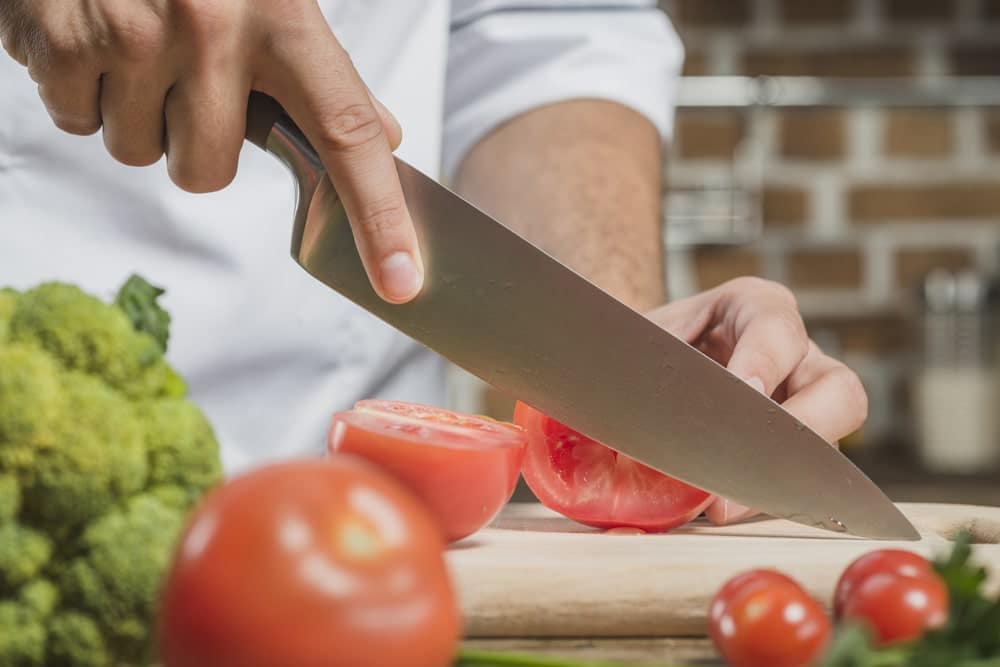
Here comes an essential tool required for perfect cutting purposes. A cook’s knife or a chef’s knife. Sharper the knife, the faster the cutting. The weight of a knife, depending on its size, plays an important role in smooth cutting.
Chef knives are available in different lengths and blade widths. You can choose your ideal combination out of the many. Usually, 6″ to 14″ knives are preferred for other jobs. Their blade size may vary from 1-1/2 to 3 inches wide. It is believed that an 8 inches long knife remains the best for all types of cutting jobs.
Chef knives are made using various materials such as; stainless steel, ceramic and laminated blades, or carbon steel. The last one is considered the longest-life knife as well as the sharper one.
3. Mandoline
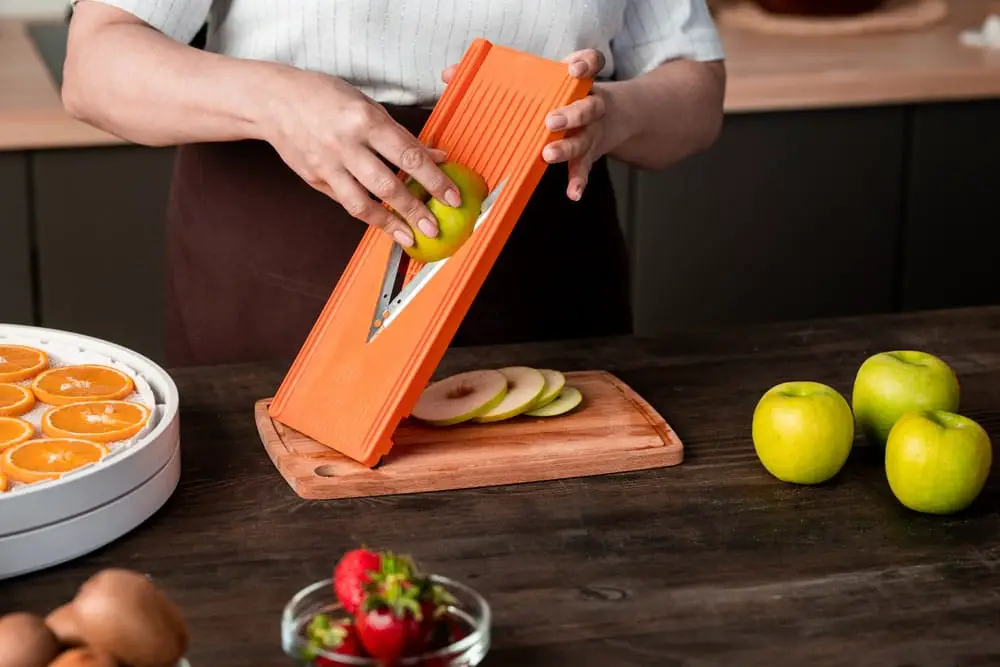
A mandoline slicer is a cooking utensil that is used to get evenly cut veggies. Mandoline is ideally used to cut and slice the juliennes. Mandoline is designed to get crinkle cuts.
The name mandoline is derived from the wrist motion of the mandoline user. The movement resembles a mandoline (musical instrument) playing.
The mandoline has a bladed surface to have evenly sliced or cut vegetables. Differently sized blades allow you to cut your food in different sizes. It comprises two parallel surfaces. The height-adjustable surface helps the veggie slide over, and the food approaches the blade while the slices gather down on the counter.
You can adjust the thickness to the required level, and as a result, the mandoline provides you even slices every time.
Conclusion
In whatever field you are, practice is the key factor that helps you master that particular skill. If you are aware of different types of vegetable cuts, your serving will be exceptionally incredible. And if you are an expert with all these cutting techniques, your preparation time will reduce to lesser. So keep practicing and present well.
